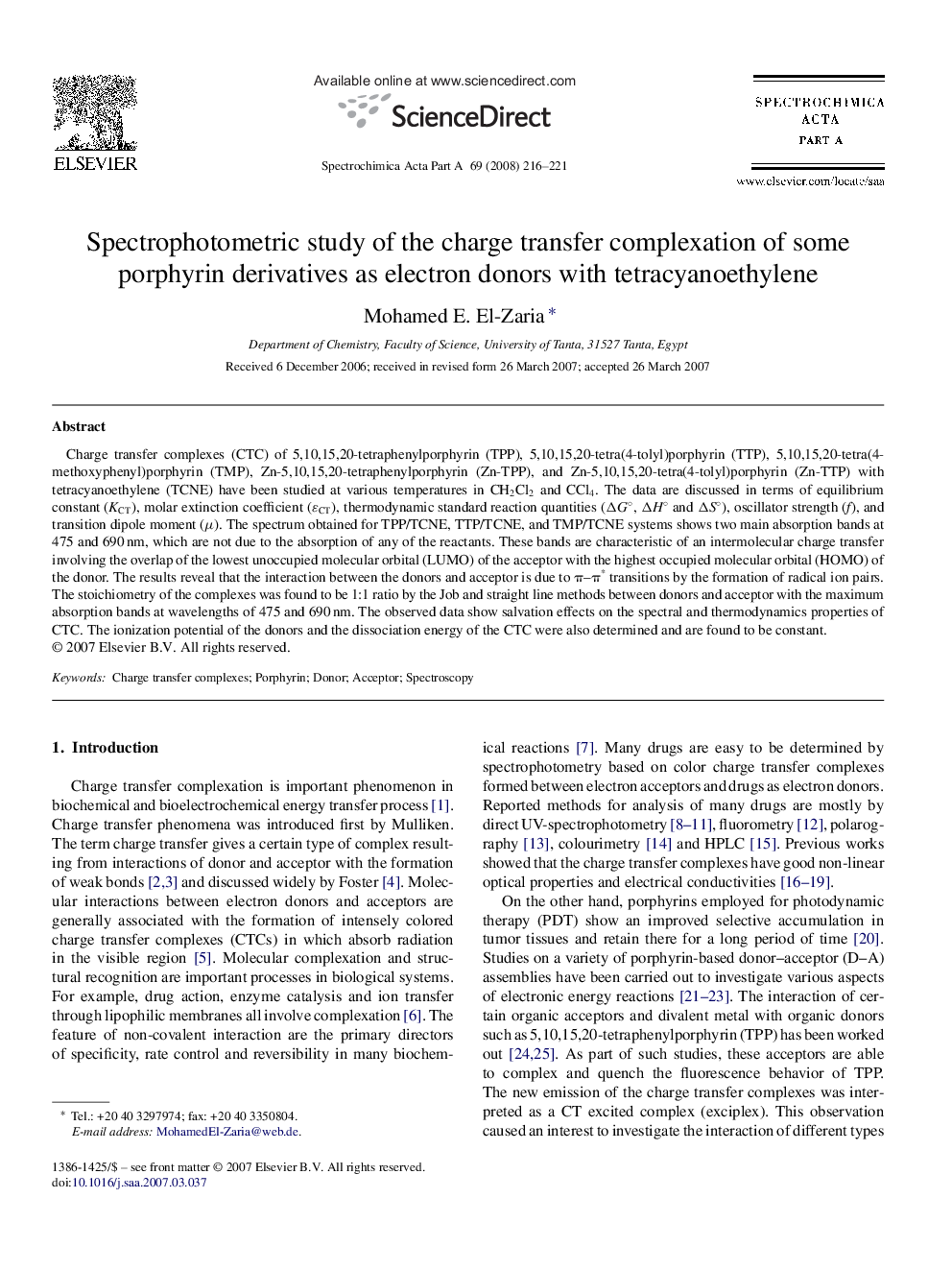| Article ID | Journal | Published Year | Pages | File Type |
|---|---|---|---|---|
| 1235270 | Spectrochimica Acta Part A: Molecular and Biomolecular Spectroscopy | 2008 | 6 Pages |
Charge transfer complexes (CTC) of 5,10,15,20-tetraphenylporphyrin (TPP), 5,10,15,20-tetra(4-tolyl)porphyrin (TTP), 5,10,15,20-tetra(4-methoxyphenyl)porphyrin (TMP), Zn-5,10,15,20-tetraphenylporphyrin (Zn-TPP), and Zn-5,10,15,20-tetra(4-tolyl)porphyrin (Zn-TTP) with tetracyanoethylene (TCNE) have been studied at various temperatures in CH2Cl2 and CCl4. The data are discussed in terms of equilibrium constant (KCT), molar extinction coefficient (ɛCT), thermodynamic standard reaction quantities (ΔG°, ΔH° and ΔS°), oscillator strength (f), and transition dipole moment (μ). The spectrum obtained for TPP/TCNE, TTP/TCNE, and TMP/TCNE systems shows two main absorption bands at 475 and 690 nm, which are not due to the absorption of any of the reactants. These bands are characteristic of an intermolecular charge transfer involving the overlap of the lowest unoccupied molecular orbital (LUMO) of the acceptor with the highest occupied molecular orbital (HOMO) of the donor. The results reveal that the interaction between the donors and acceptor is due to π–π* transitions by the formation of radical ion pairs. The stoichiometry of the complexes was found to be 1:1 ratio by the Job and straight line methods between donors and acceptor with the maximum absorption bands at wavelengths of 475 and 690 nm. The observed data show salvation effects on the spectral and thermodynamics properties of CTC. The ionization potential of the donors and the dissociation energy of the CTC were also determined and are found to be constant.
